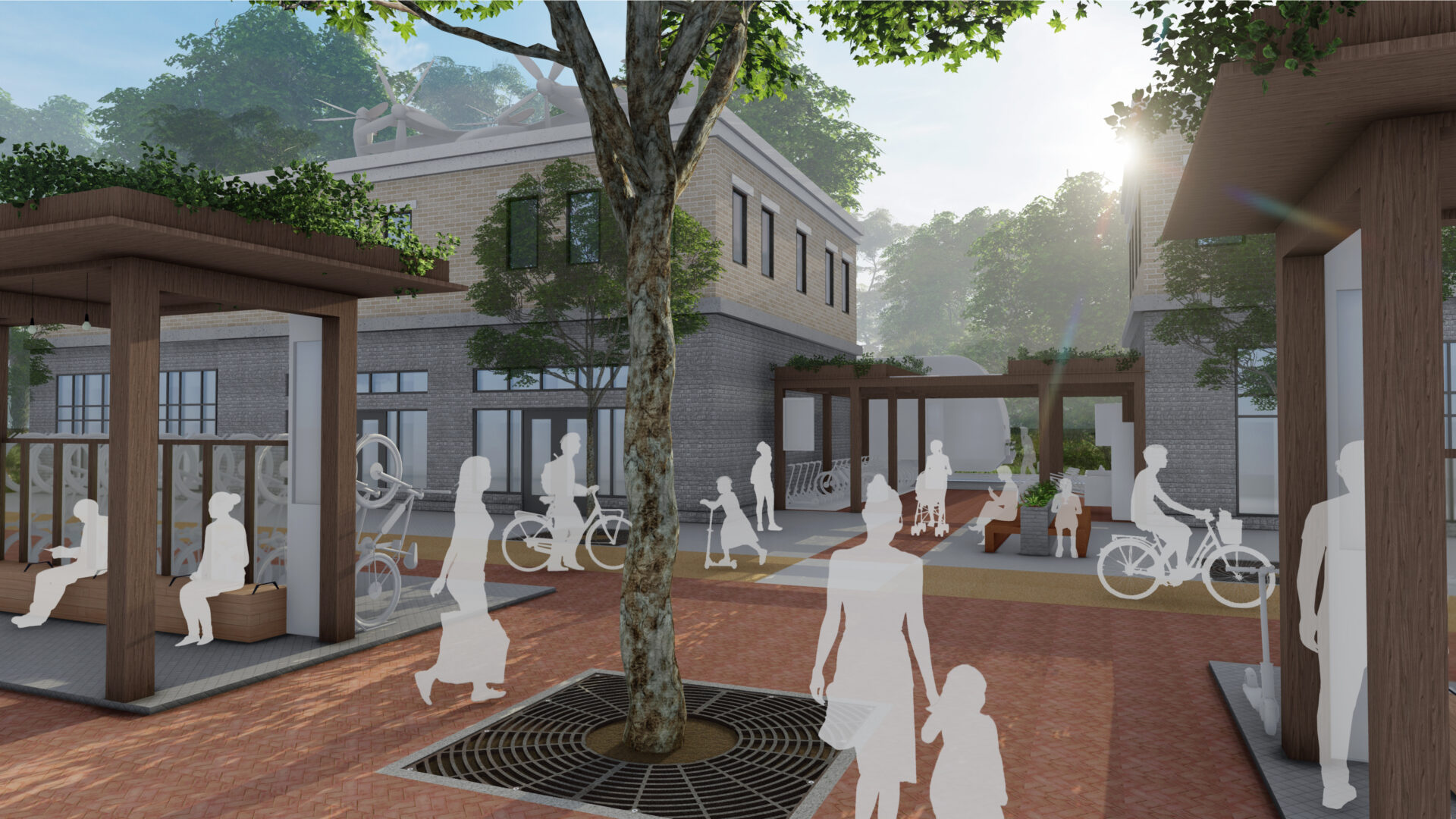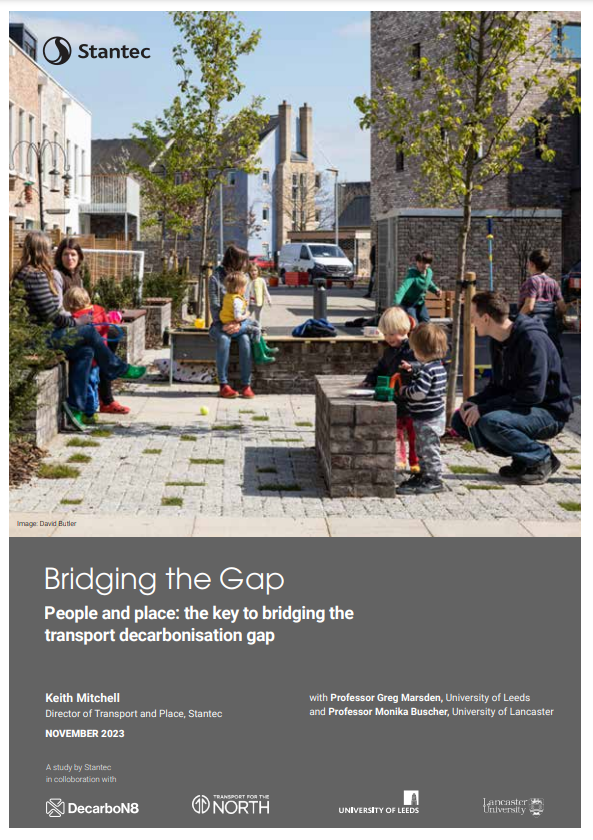The study suggests that radical changes are needed to the planning and design of places to meet mobility carbon targets.
A new report has been published suggesting there needs to be a systemic shift in the way we travel if the UK is to achieve its net zero mobility targets. ‘Bridging the Gap’ is a collaboration between Stantec and DecarboN8, other contributors include Transport for the North (TfN), Transport for Greater Manchester, and Bury Council, as well as Leeds, Newcastle, and Lancaster universities.
The extensive report outlines a carbon ‘gap’ between what can be achieved by following current government transport decarbonisation policy and the meeting of these targets in a local planning context. It concludes that relying on a switch to electric vehicles alone will not be enough to meet transport decarbonisation targets and that people and place need to play a much bigger role.
“There is so much that needs to be done to change the practice of transport planning to really confront the challenge of keeping to 1.5C and to facing the increasingly evident tragic consequences of the changes that this level of ambition implies. And 1.5C seems increasingly difficult to achieve in the face of populist culture wars and a wavering commitment to the tough decisions that the Climate Change Committee state will define our progress.
“I’m grateful to Stantec and the Engineering and Physical Sciences Research Council for their support in allowing Keith and the many others who have contributed to this report to take this challenge on and move the field forward.”
Greg Marsden, DecarboN8, University of Leeds
Reducing car use
Bridging the Gap suggests that car use in the UK needs to be reduced by at least 20 percent by 2030. There also needs to be more emphasis on creating places in which active travel, public transport or shared mobility systems are more attractive than cars, particularly for journeys between 5 and 30 kilometres.
The report demonstrates that moves towards net zero mobility will require a move away from investing in ever greater capacity for car use. Instead, there needs to be a focus on creating more attractive places to live, work, and play, where there is less need to travel, with convenient alternatives made available. Not only will this support the changes in travel behaviour we need to meet net zero mobility targets but it will also create healthier places to live.
The study develops alternative, hypothetical ‘futures’ as a basis for the research based on TfN’s Future Travel Scenarios. Elton Reservoir and Northern Gateway in Bury, Greater Manchester provides a real-world geography for the study. These futures assume major land use and transport transformation, each taking a different view about how the UK could meet its surface transport carbon outcomes.
Planning for public transport and active travel
The study concludes that higher density mixed use development, focused on improved public transport and active travel-friendly environments provides the most likely pathway to net zero transport outcomes. A technology-led and mobility services-led future also has potential but would require even more ambitious reductions in car use.
Radical change and innovation would be needed to deliver either of these futures. It is often assumed that society is not ready for such change, or that the need to change is not understood by communities, Bridging the Gap takes an alternative view that it is the change itself that is not ready for society. The report piloted Societal Readiness Assessments as a new approach to preparing the ground for the transition by examining how solutions and might need to adapt to align with societal needs.
Our team has pioneered an invaluable vision-led planning approach and developed powerful tools for systemic analysis. We’ve embraced societal readiness assessments, which have enabled us to develop place-based, multi-dimensional analysis with stakeholders in a way that invites dissent and leverages it constructively. Ultimately, we need to bring the public with us on this journey to net-zero mobility.”
Monika Buscher, DecarboN8, Lancaster University
This future-thinking project was co-funded by Stantec, the Engineering & Physical Sciences Research Council, the Economic and Social Research Council, and the University of Leeds.


